My shopping cart
Call us at 888-424-4602 or email us at info@tuesdaysnaturaldogcompany.com for questions about your order status.
Your cart is currently empty.
Continue ShoppingAntlers are well-known for being one of the most durable and long lasting chews available for dogs. Antlers are an extension of the animal’s skull, and are made of true bone. Antlers are naturally shed and regrow every year, and are the fastest growing bone found in nature.
What are Power Paddle Deer antlers, and how are they different from regular deer antlers?

Power paddle antlers are sourced from deer whose antlers have a more broad, palmate shape, rather than the typical points emerging from a main beam.
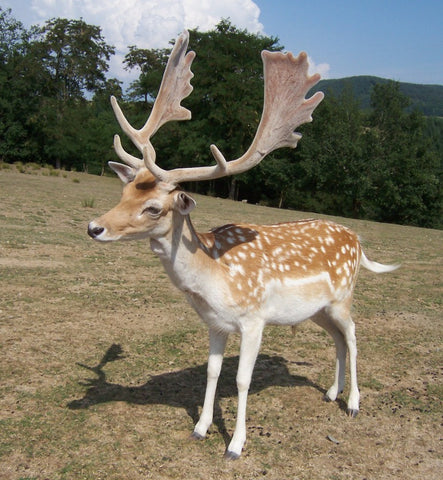
Power paddle antlers are shaped similarly to a moose antler. The smaller sized antler chews are more likely to be elongated, whereas the larger pieces tend to have a flattened shape. This flat shape is especially beneficial for those individual dogs who will attempt to swallow longer narrow treats whole.

The difference between our Power Paddle antlers and regular deer antlers is markedly noticeable. Regular deer antlers tend to be long and slender, whereas the Power Paddles have a broad and flat shape.
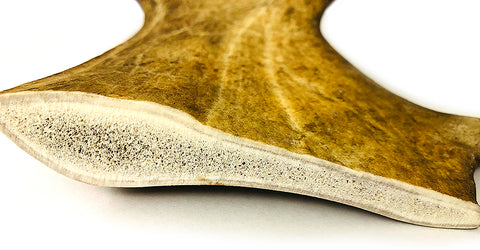
The hardness of Power Paddle deer antlers fall somewhere in between elk and deer antlers. Click here to jump to the section that discusses antler hardness.
What are Royal Brown antlers, and how are they different from regular deer antlers?

Royal Brown antlers are similar to regular deer antlers, except that they are hand selected for their dark brown coloration.
Some factors that can affect the coloration of an antler:
Does that mean that the Royal Brown antlers are “better” for my dog?
The nutritional value is likely negligible between the two grades of antlers, especially since most dogs scrape off small amounts of the antler during a single chewing session.
The primary benefit of the royal brown antlers is that they are more durable compared to antlers that have been exposed to the sun and elements for a longer period of time.
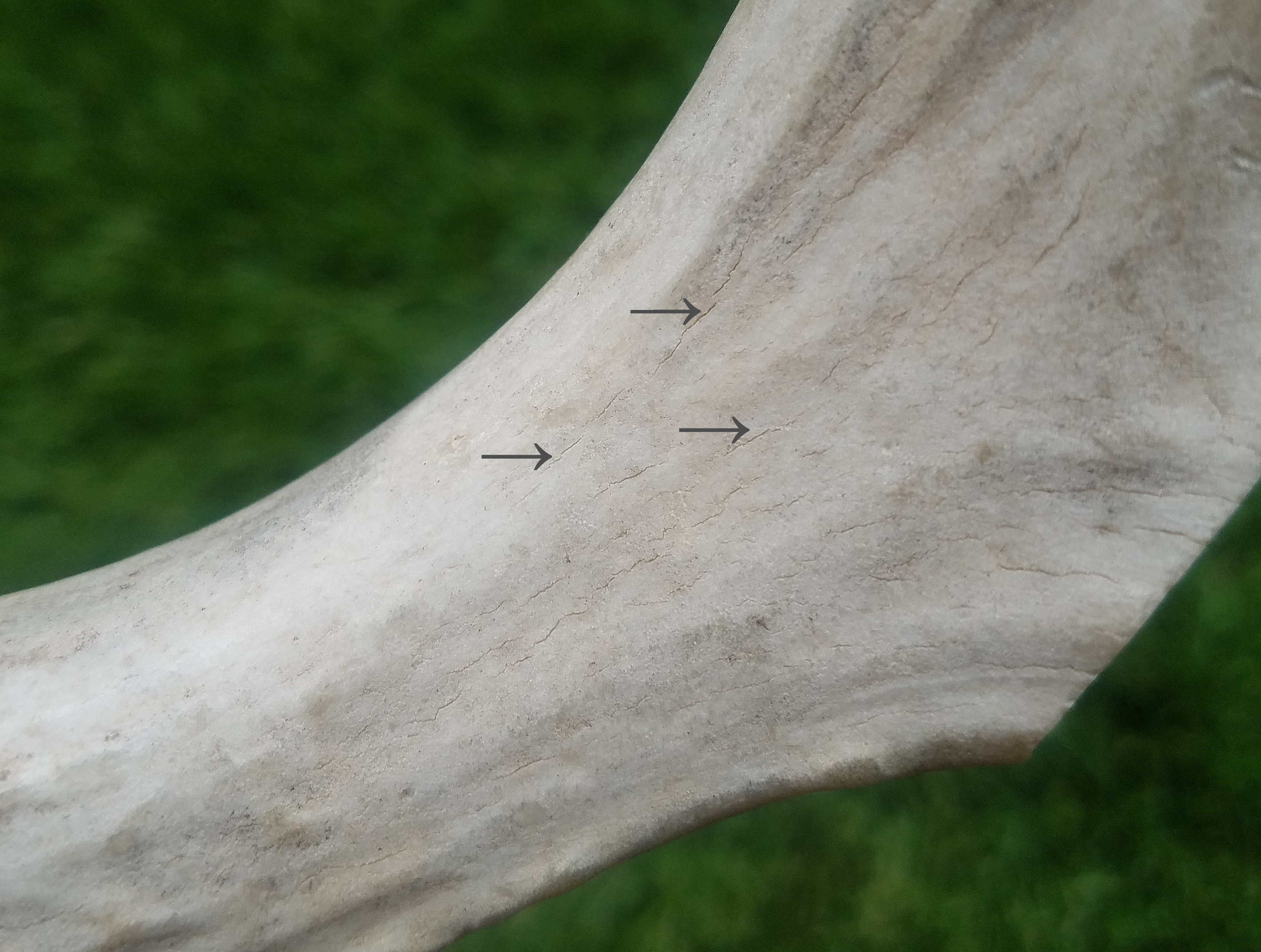
This deer antler is almost pure white, and likely has been sitting out in the sun for a while prior to being collected. The fine cracks, indicated by the grey arrows, will occur over time as the antler loses moisture to the environment. These cracks could impact the structural integrity of the antler, especially if a particularly powerful dog was chewing on the piece.
Are deer antlers different from elk or moose antlers?
YES! There is a noticeable difference among deer, elk, and moose antlers, especially when comparing the hardness and density of the antler.
When it comes to dog chews, the two main antler structures we’re interested in is the hard outer core and the softer inner marrow.

Deer antlers will be significantly harder than elk antlers. Note the thick outer core, which is an extremely hard structure compared to the softer, “spongy” inner marrow. Because the tough outer core is so thick in deer antlers, it will take a dog a longer period of time to whittle the antler down to the marrow, when compared to an elk antler.
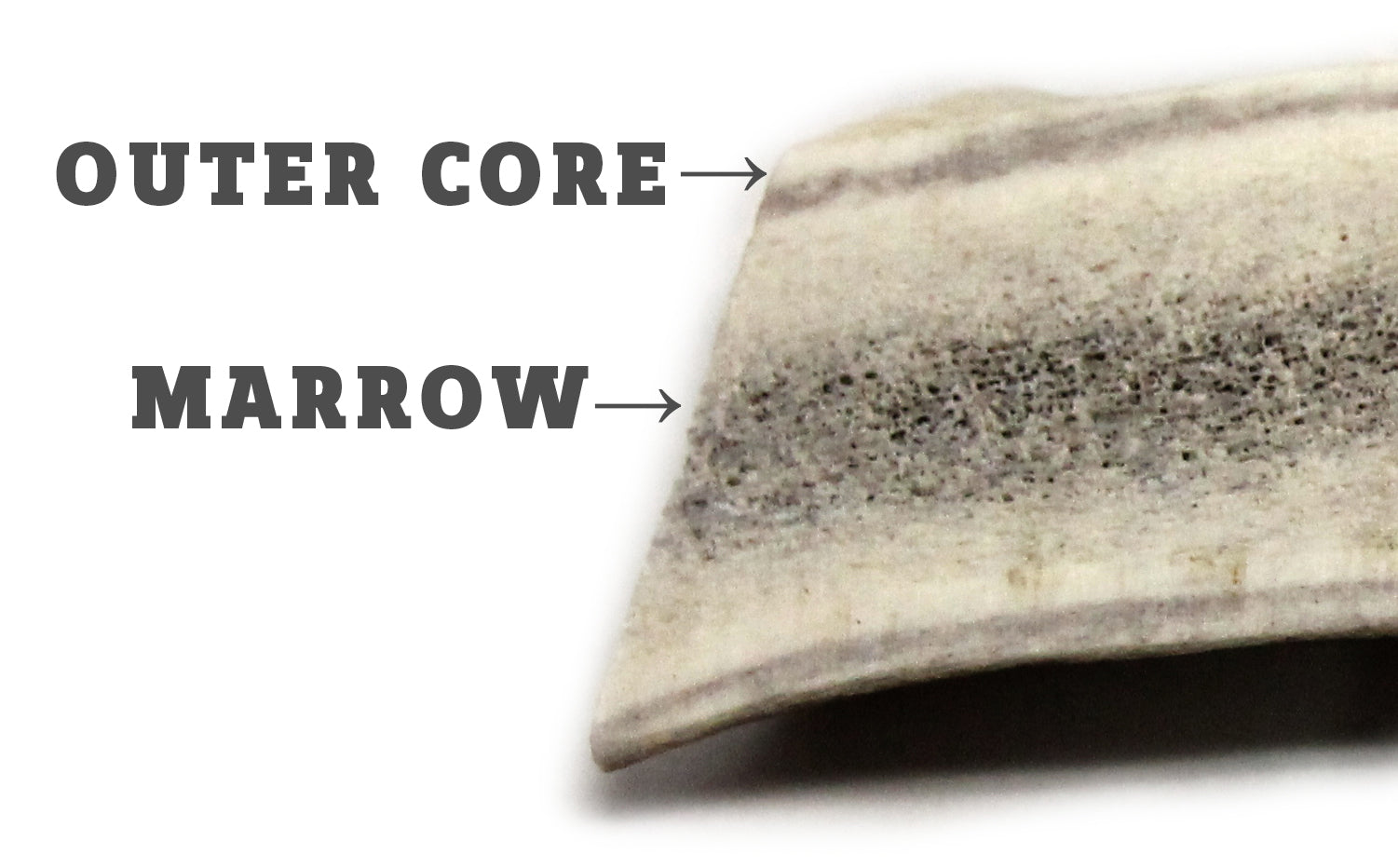
In comparison, this elk antler has a much thinner outer core, with the inner marrow taking up the majority of space. A very strong dog could probably crush this antler into multiple pieces, so a split elk antler like this example, would be better suited for a small to medium sized dog who enjoys to chew but isn’t overly aggressive or enthusiastic about it.
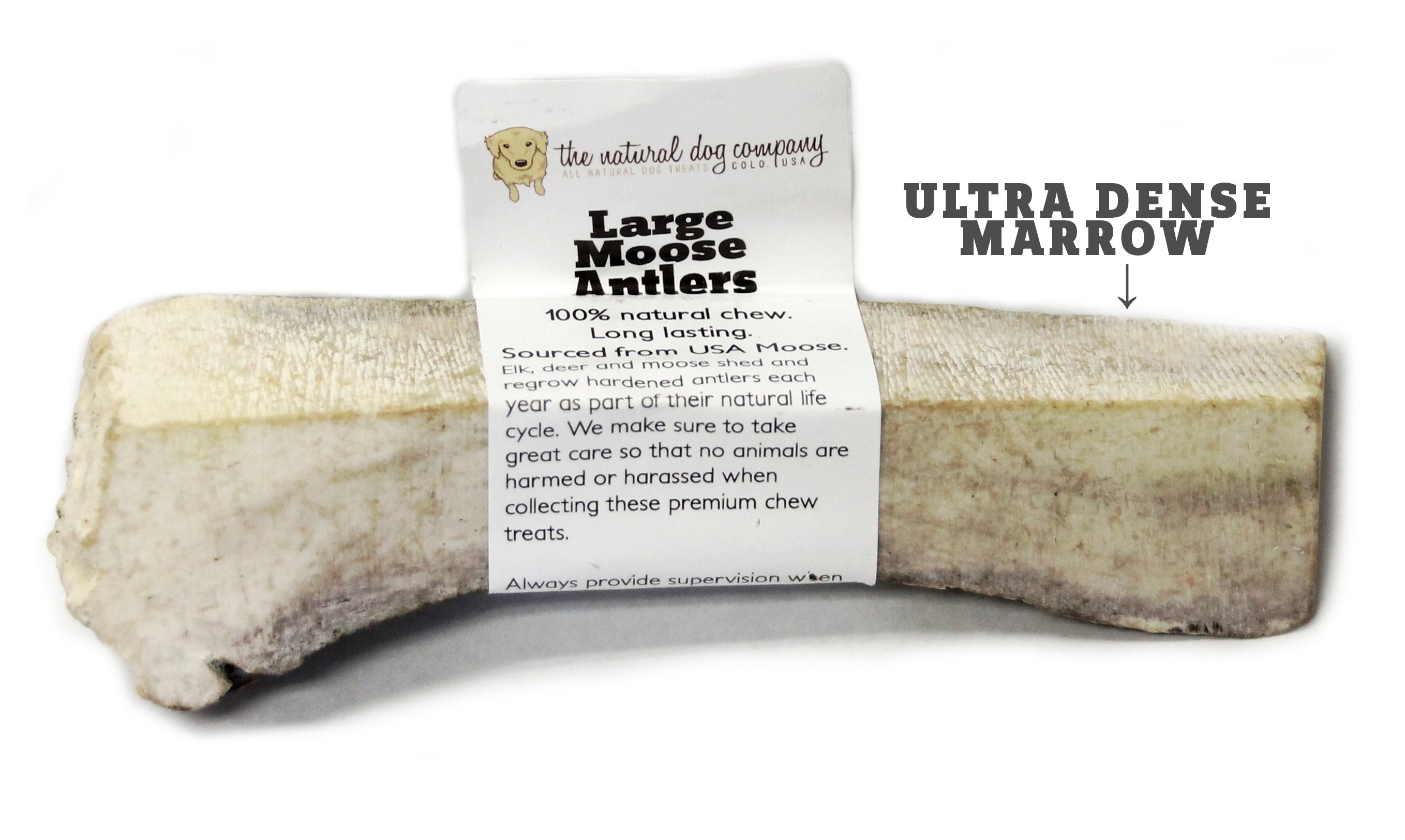
Moose antlers are distinguished from elk and deer antlers because of its sheer size. The “paddle” portion of the moose antler (the flat wide part of the antler that fans out) will be much less dense compared to the base of the antler, seen in the example above. The base of the antler is extremely dense - even the inner marrow is significantly denser when compared to the marrow of the elk and deer. This is because the base of the antler needs to be strong enough to support the rest of the heavy paddle.

Here’s a comparison of the inner marrow of moose, elk, and deer antlers. Notice how porous and “spongy” the elk, deer, and moose paddle marrow are compared to the smooth, dense surface of the moose base marrow.
Based on our experiences, here’s a ranking, from hardest to softest: Moose (base), deer, elk, moose (paddle).
Why is it that antlers categorized as “large” and “small” end up around the same length?
We measure antlers based on weight, rather than length.
Small antlers: 100g or less
Medium antlers: 101g - 200g
Large antlers: 201g - 300g
Huge antlers: 301g +
The long, pointy deer antler on the left got classified as a “small”, rather than “large”. It only weighed about 80g, whereas the large deer antler on the right, weighed about 285g.
This makes sense because that specific antler was very lightweight, and quite delicate when you compare it to that heavy, blocky, ultra dense deer antler on the right. Even though that “small” deer antler is the longest piece in this pile, it absolutely would not have been suitable for a powerful dog, such as a German Shepherd, because it is not dense enough to stand up to that kind of rigorous chewing. Even though the large deer antler on the right is shorter, it is much thicker, heavier, and therefore durable when compared to a skinny, yet long, antler.
What’s the difference between a split and whole antler?

Split antlers are cut lengthwise, and the edges are beveled to smooth it out.
Whole antlers are only cut at the ends, so the only exposed marrow would be a small section at the very end of the piece.
WHOLE
Pros: More durable compared to the split antler
Cons: The marrow is the tastiest part of the antler and is more nutritious, so pickier dogs may not be interested in chewing a whole antler.
SPLIT
Pros: The nutritious marrow is exposed, and dogs are more attracted to the marrow than the outer core.
Cons: Split antlers are less durable compared to whole antlers. Dogs who are large and extremely powerful may be more suited to a whole antler, rather than a split antler.
What’s the nutritional value of antlers?
Antlers are rich in calcium and phosphorus, with small amounts of magnesium, sodium, and other minerals. In the wild, small mammals, such as squirrels, with often gnaw on shed antlers, especially if the surrounding soil in the habitat is depleted of essential minerals and nutrients.
Here is the guaranteed analysis of the average elk antler, with deer and moose antlers being very similar in value:
Crude Protein (Min): 38.9%
Crude Fat (Min): 1.2%
Crude Fiber (Max): 1.8%
Moisture (Max): 9.9%
5.2kcal/g
A University of Georgia study detected 11 different minerals in deer antlers. In addition to calcium (19 percent) and phosphorus (10 percent), the next most common elements were magnesium (1 percent) and sodium (0.5 percent). Trace amounts of other minerals were found, including potassium, barium, iron, aluminum, zinc, strontium and manganese.
Are antlers safe for my dog to chew?
Antlers are not suitable for every single dog. They are a durable and long lasting chew for dogs with strong jaws and teeth. If a dog already has underlying dental problems, such as crown fractures, gingivitis, tooth decay, etc, or if they are a young puppy with deciduous teeth ("milk teeth", "baby teeth") they should be given a softer chew instead, such as gullet strips or lamb lung wafers.
ALWAYS observe your dog while they are chewing an antler, or ANY treat, and remove the treat from your dog if they appear to be eating it too quickly.